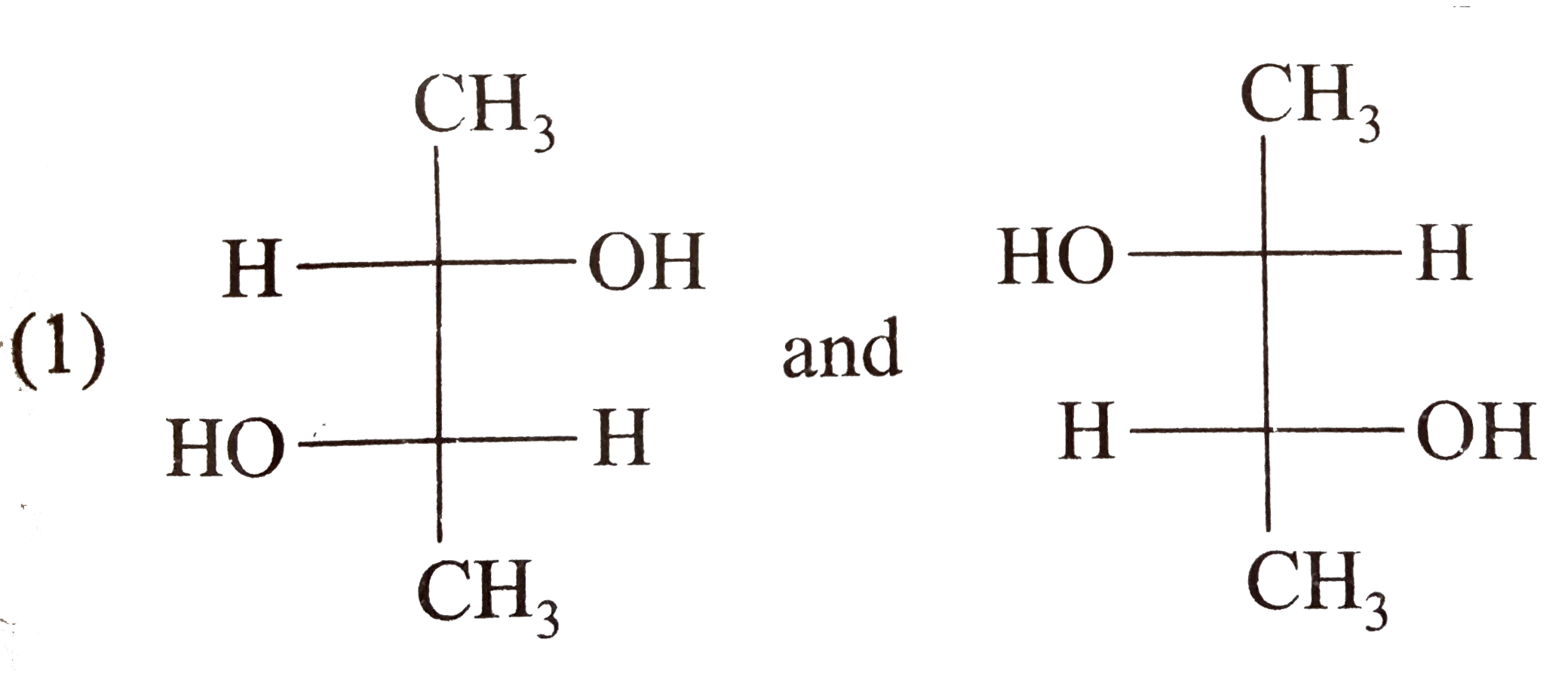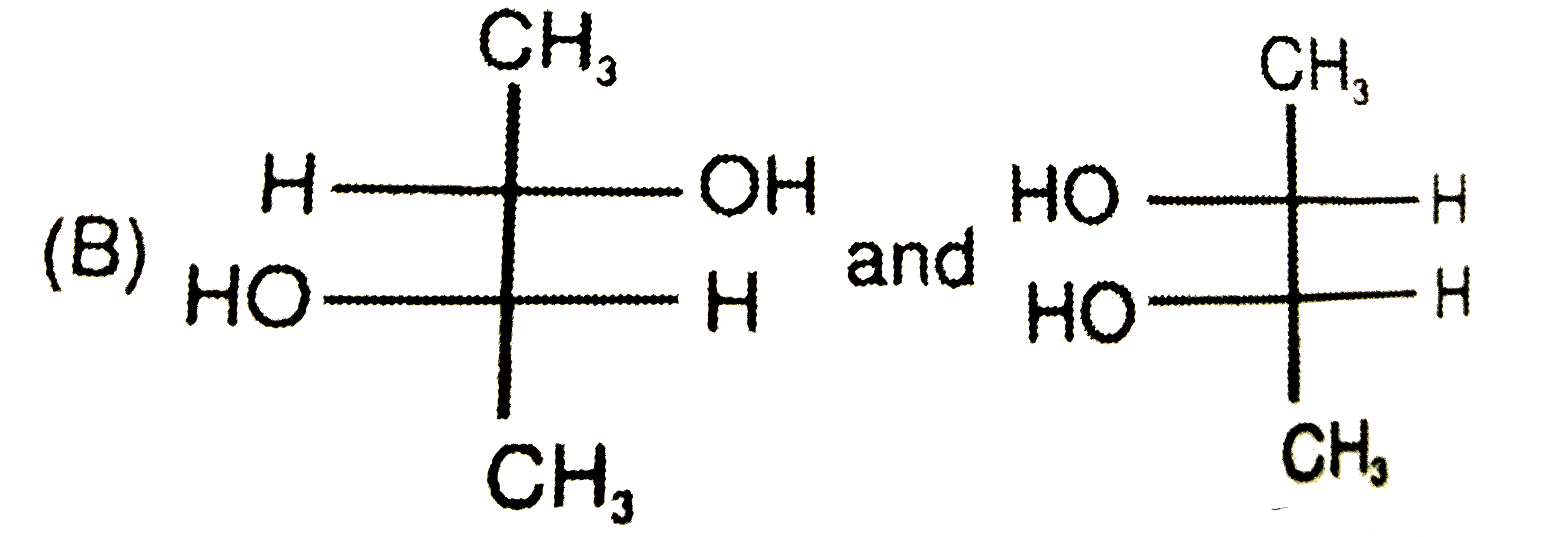Which of the following pairs of compounds are enantiomers?




The correct Answer is:A
To determine which pairs of compounds are enantiomers, we need to analyze the structures of the given compounds and check if they are non-superimposable mirror images of each other. Here’s a step-by-step solution:
Step 1: Understand the Definition of Enantiomers
Enantiomers are pairs of molecules that are mirror images of each other and cannot be superimposed. They typically have at least one chiral center.
Hint: Look for chiral centers in the compounds. Chiral centers are usually carbon atoms bonded to four different groups.
Step 2: Analyze the Given Compounds
Let's denote the compounds as A, B, C, and D. We will examine their structures to identify if they are enantiomers.
Hint: Draw the structures of the compounds to visualize their spatial arrangement.
Step 3: Check Compound A
Assuming Compound A has the structure CH3, OH, H, and CH3, we need to determine if it has a chiral center. If it has one, we will check its mirror image.
Hint: Identify if any carbon in Compound A has four different substituents.
Step 4: Check the Mirror Image of Compound A
If the mirror image of Compound A has the same connectivity but is arranged differently in 3D space, then they are enantiomers.
Hint: Use a model kit or software to visualize the 3D orientation of the compounds.
Step 5: Analyze Other Compounds (B, C, D)
Repeat the analysis for compounds B, C, and D. Check for chiral centers and their mirror images.
Hint: Compare the connectivity of the substituents in each compound to determine if they are non-superimposable.
Step 6: Identify Enantiomer Pairs
After analyzing all compounds, identify which pairs are enantiomers based on your findings.
Hint: Look for pairs that have opposite configurations at all chiral centers.
Conclusion
After careful analysis, we find that only Compound A has a non-superimposable mirror image, confirming that it is an enantiomer pair.
Final Answer: The enantiomers are found in Option A.
Enantiomers are pairs of molecules that are mirror images of each other and cannot be superimposed. They typically have at least one chiral center.
Let's denote the compounds as A, B, C, and D. We will examine their structures to identify if they are enantiomers.
Assuming Compound A has the structure CH3, OH, H, and CH3, we need to determine if it has a chiral center. If it has one, we will check its mirror image.
If the mirror image of Compound A has the same connectivity but is arranged differently in 3D space, then they are enantiomers.
Repeat the analysis for compounds B, C, and D. Check for chiral centers and their mirror images.
After analyzing all compounds, identify which pairs are enantiomers based on your findings.
After careful analysis, we find that only Compound A has a non-superimposable mirror image, confirming that it is an enantiomer pair.
Topper's Solved these Questions
Similar Questions
Knowledge Check
Which of the following paris of compounds are enantiomers :
A B
B C
C D
D
Which of the following pairs of compounds are not isomers?
APropan-1-ol and methoxyethaneBPropene and cyclopropeneCpropyne and propadieneDpropyne and cyclopropeneWhich of the following pairs of compounds are tautomers ?
APropanol & propanoneBEthanol & vinyl alcoholCEthanol & ally alcoholDVinyl alcohol & ethanol
Which of the following pairs of compounds are chain isomers?
View SolutionWhich of the following pairs of compounds are not metamers ?
View SolutionWhich of the following pairs of compounds are geometrical isomers
View SolutionWhich of the following pairs of compounds are not position isomers?
View SolutionWhich of the following pairs of compounds are not position isomers?
View Solution

